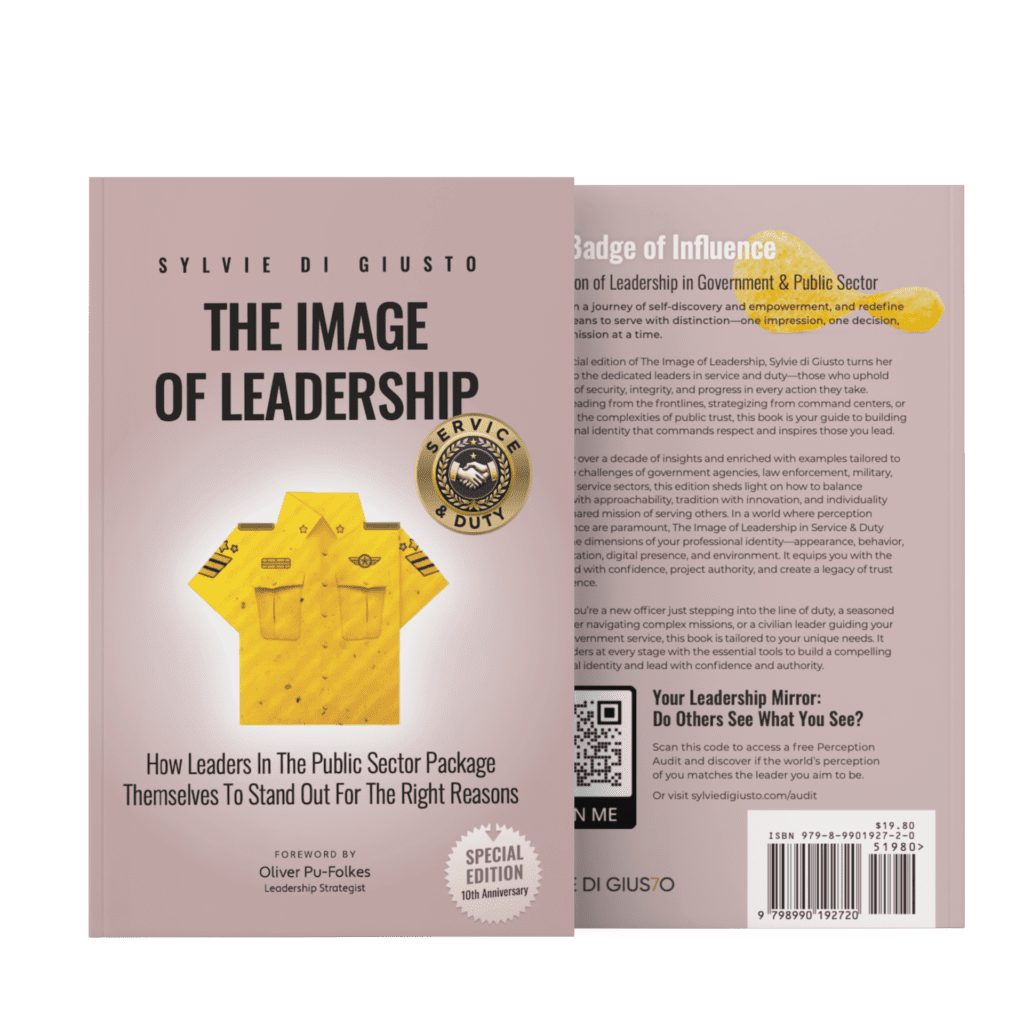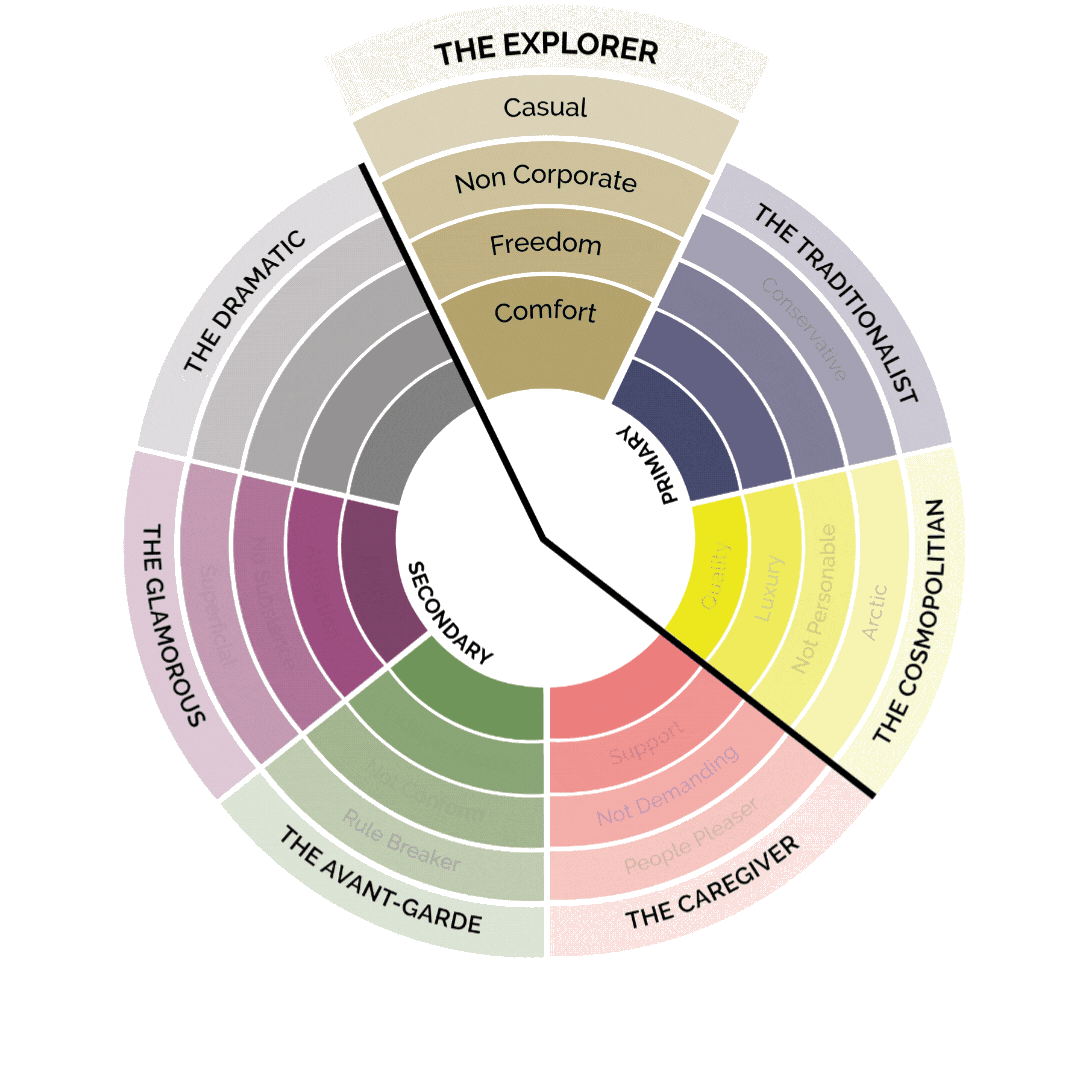Public leadership comes with expectations—some written, some unwritten, and many that are silently enforced.
Even if your role doesn’t require a formal uniform, that doesn’t mean you aren’t wearing one. Public leadership comes with a set of visual expectations that shape credibility and influence. Whether you’re a city planner, a policy advisor, or an emergency management director, your appearance is constantly communicating something. It can either reinforce your authority and trustworthiness or create unnecessary barriers. The question is: are you controlling that message, or is it controlling you?
Key Takeaways
- Public leadership comes with silent standards that shape how you are perceived.
- Your unwritten uniform is an unspoken code—ignore it at your own risk.
- Understanding how public leaders in your sector visually present themselves can help you align with expectations.
- The most successful public leaders master the balance of fitting in and standing out.
- Your professional appearance is not about vanity—it’s about influence, credibility, and trust.
- The silent uniform of public leadership is a tool—use it wisely.
Silent Standards and Unwritten Uniforms of Public Leadership
You might think that because you don’t wear a mandated uniform, you have complete freedom in your appearance. Think again. Public leadership is filled with unspoken rules—silent standards that dictate what credibility, trust, and authority look like in your field. These expectations aren’t formalized in any dress code policy, but they exist in the collective consciousness of the people you serve and the teams you lead.
We all have expectations of certain professionals based on their roles, whether we realize it or not. When you meet with a financial advisor, you expect them to present themselves with polished professionalism—perhaps a well-tailored suit, a confident posture, and an air of meticulous detail. When you hire an architect to design your dream home, you might expect a mix of creativity and precision—stylish yet practical attire that signals innovation while maintaining an analytical edge. A fitness coach? Likely athletic wear that conveys discipline and energy. These silent assumptions exist across every industry, shaping our perceptions before a single word is spoken. The same applies to public leadership, where the visual cues you project can either align with or challenge the expectations of those you serve.
Now think of high-profile government offices where leaders often wear conservative suits, crisp shirts, and understated accessories. It’s not just tradition—it’s a visual representation of authority and stability. Now compare that to community outreach programs, where leaders may adopt practical, approachable attire to foster trust. In more creative sectors of public service, like cultural programs or civic arts initiatives, leaders often wear more expressive, contemporary clothing to convey innovation and forward-thinking.
No matter your role, the unspoken uniform of public leadership exists—
and it speaks volumes before you ever say a word.
Decoding the Visual Language of Public Leadership
Before you ever speak, your appearance makes an introduction on your behalf. It sets the stage for how you are perceived, whether as a confident authority or an uncertain presence. In public leadership, where credibility is constantly being assessed, the smallest details—how you dress, how you carry yourself, how you present your professionalism—become silent indicators of your role and effectiveness. Mastering this language doesn’t mean surrendering individuality; it means understanding the rules of perception and leveraging them to your advantage.
1. Observe before you act: Take a step back and look at the public leaders around you. What do they wear? What message does it send? You’re not aiming to copy them—you’re learning the language of public leadership in your field. Pay attention to details: the colors, the patterns, the level of formality, even accessories. These are the visual cues that tell a story.
2. Consider the context: Public leadership isn’t one-size-fits-all. How you dress in a senior leadership meeting might not be the same as how you present yourself at a community event. The key is adaptability. What works in a high-level strategy meeting might make you seem distant in a neighborhood forum, and what makes you relatable at a town hall might feel too informal in a crisis response meeting.
3. Align without losing yourself: Public leadership doesn’t mean losing your individuality. Once you understand the silent standards of your field, find ways to subtly personalize your look. Maybe it’s a signature color, a meaningful accessory, or a tailored twist on a traditional style. The goal isn’t just to blend in—it’s to belong while still standing out for the right reasons.
4. The power of small details: Your uniform isn’t just about clothing. It’s about the details—how polished your shoes are, how well-groomed you appear, how intentional your choices seem. These micro-decisions shape macro-impressions. Do you look prepared? Do you look like someone people can trust? These details whisper before you even speak.
Balancing Your Perception Persona with Public Leadership
Every leader has a mix of personas that influence their presence. Maybe you’re naturally authoritative but need to soften your image for community engagement. Or perhaps you exude warmth but want to project more executive-level confidence.
There are seven different perception personas—three primary and four secondary—that define how you perceive yourself and how others perceive you. These personas shape the way your leadership presence is received and can reveal whether there is alignment or a disconnect between your intended message and its impact. If you’re unsure about your perception persona, I invite you to take the free audit here.
Once you know your persona, it becomes easier to refine your professional presence, ensuring that your silent uniform aligns with both your personal strengths and the expectations of public leadership. And understanding how to balance and borrow from different leadership styles can help you refine your silent uniform.
Balancing personas: If you are in community engagement, your Caregiver qualities might need to take the lead, but if you shift into a strategy role, your Traditionalist persona might need to come forward.
Borrowing elements: If you typically dress conservatively but attend a public arts event, borrowing elements of the Avant-Garde persona (like some accessories) can help you connect with your audience.
Balancing Your Perception Persona with Public Leadership
Every leader has a mix of personas that influence their presence. Maybe you’re naturally authoritative but need to soften your image for community engagement. Or perhaps you exude warmth but want to project more executive-level confidence.
There are seven different perception personas—three primary and four secondary—that define how you perceive yourself and how others perceive you. These personas shape the way your leadership presence is received and can reveal whether there is alignment or a disconnect between your intended message and its impact. If you’re unsure about your perception persona, I invite you to take the free audit here.
Once you know your persona, it becomes easier to refine your professional presence, ensuring that your silent uniform aligns with both your personal strengths and the expectations of public leadership. And understanding how to balance and borrow from different leadership styles can help you refine your silent uniform.
Balancing personas: If you are in community engagement, your Caregiver qualities might need to take the lead, but if you shift into a strategy role, your Traditionalist persona might need to come forward.
Borrowing elements: If you typically dress conservatively but attend a public arts event, borrowing elements of the Avant-Garde persona (like some accessories) can help you connect with your audience.
The Self-Imposed Uniform: Are You Limiting Yourself?
Beyond external expectations, many public leaders impose their own silent rules on themselves—sometimes without realizing it. These internal mandates can be just as restricting as formal dress codes.
Whether driven by past experiences, cultural norms, or traditions, these self-imposed limitations often dictate how public leaders present themselves, sometimes to their own detriment. They may feel the need to conform to outdated expectations, downplay aspects of their identity to fit in, or adhere to rigid professional standards that no longer serve them. Recognizing these invisible barriers is the first step to overcoming them—because true public leadership presence isn’t about rigid conformity; it’s about strategic authenticity.
Do you feel pressure to dress more like your male counterparts to be taken seriously? This outdated belief may cause you to suppress your individuality as a woman rather than enhance your leadership presence.
Are you holding onto the same style you’ve had for decades? An unchanging appearance can signal a reluctance to evolve. A simple refresh can communicate that you are engaged and forward-thinking.
Are you dressing down to seem more relatable? While approachability matters, appearing too casual can dilute the respect and influence you need to command in your role.
Public leadership is as much about presence as it is about policy. The way you present yourself sends a message before you ever say a word. It can open doors, foster trust, and solidify your credibility—or it can create barriers you never intended. The key is not to be controlled by silent standards, but to master them.
The strongest public leaders don’t just understand the unspoken rules of leadership presence—they use them to their advantage. So ask yourself: Does your presence reinforce the public leader you are—or the public leader you aspire to be?
Take Control of Your Public Leadership Image
Your appearance is an extension of your public leadership. Whether you follow the silent standards, bend them, or break them entirely, the choice should be intentional—not accidental. The best leaders understand that perception isn’t just about what you say; it’s about what you show.
For a deeper dive into mastering the look of leadership in the public sector, order your copy of The Image of Leadership in Duty & Service today!














